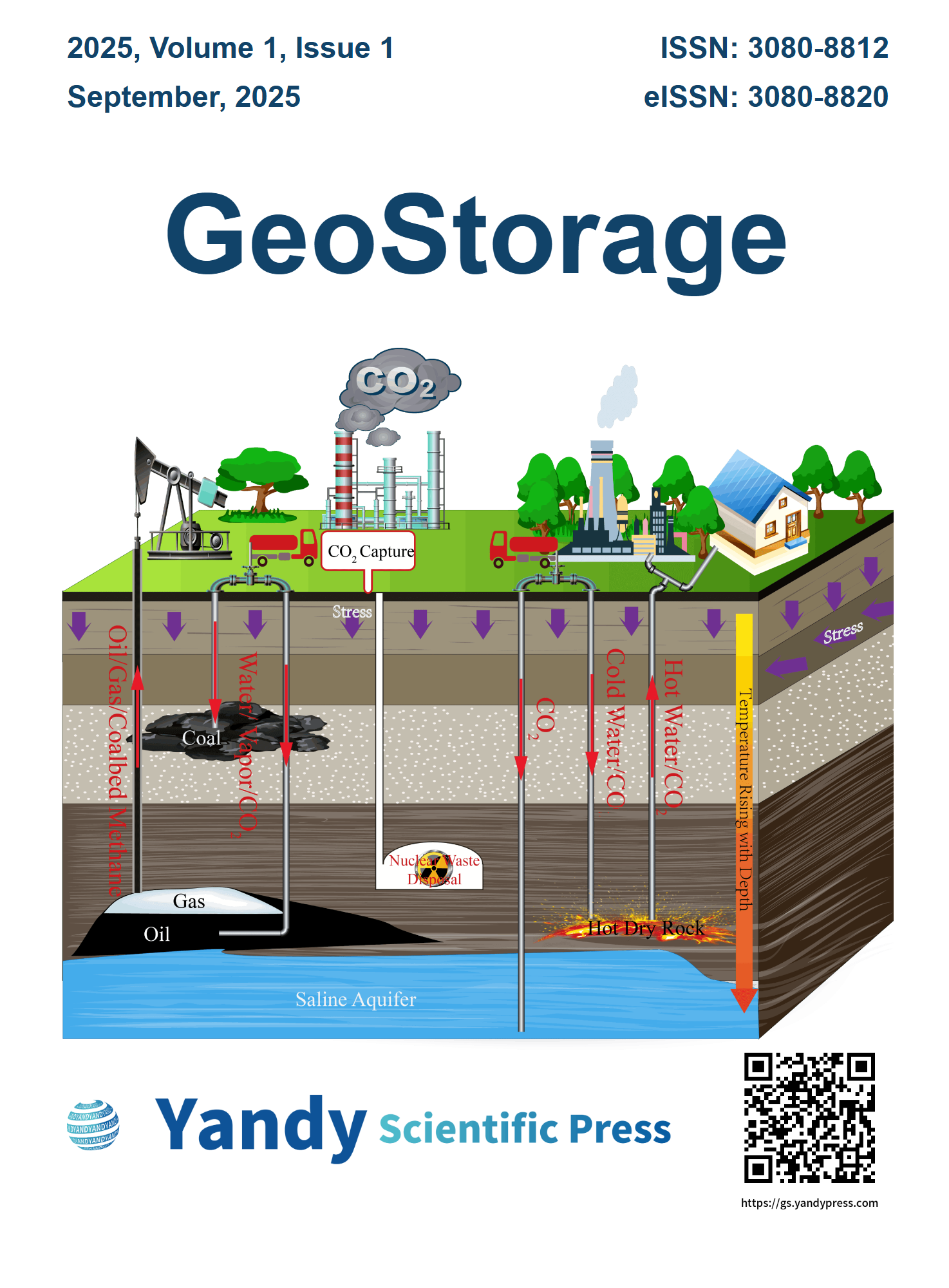A Zero-Pore-Pressure Slope Infiltrometer for Controlled Saturation and Accurate Hydraulic Conductivity Measurement
Abstract
Soil water infiltration fundamentally governs hydrological processes, yet existing measurement methods remain inadequate for slope conditions. This study presents a novel slope infiltrometer designed for precise infiltration measurements under saturated, zero-ponding conditions across 0°-42° slopes. The system combines Mariotte-controlled water supply with minimal soil disturbance (2 cm insertion depth), successfully characterizing silt to sandy soils (T1-T6 tests). Validation against TDR measurements demonstrated strong agreement, with absolute moisture content errors of-4.6% to +0.4% (83% of cases within ±11% relative error). Compared to conventional methods, the design eliminates surface pressure gradients while remaining insensitive to initial moisture conditions, enabling direct saturated hydraulic conductivity determination. The technique provides complete infiltration curves within 1-6 hours, offering significant advantages for hillslope hydrology studies and irrigation design under natural slope conditions.
Article type: Research article
Cited as:
Wu MX,Song SX,Zhan ZG, 2025. A Zero-Pore-Pressure Slope Infiltrometer for Controlled Saturation and Accurate Hydraulic Conductivity Measurement, GeoStorage, 1(1), 71-79. https://doi.org/10.46690/gs.2025.01.05
Keywords:
Field infiltration measurement, Hydraulic conductivity, Infiltrometers, slope stability, rainfall infiltrationReferences
Alagna V, Bagarello V, Prima SD, et al. 20176. Determining hydraulic properties of a loam soil by alternative infiltrometer techniques. Hydrology Processes, 30(2): 263–275. https://doi.org/10.1002/hyp.10607.
Ankeny MD, Kaspar TC, Horton R. 1988. Design for an automated tension infiltrometer. Soil Science Society of America Journal, 52(3): 893–896. https://doi.org/10.2136/sssaj1988.03615995005200030054x.
Angulo-Jaramillo R, Bagarello V, Iovino M, et al. 2016. Infiltration Measurements for Soil Hydraulic Characterization. Springer. https://doi.org/10.1007/978-3-319-31788-5.
Assouline S, Narkis K, Or D. 2022. Evaporation from soils under thermal boundary conditions: Experimental and modeling investigation. Water Resources Research, 58, e2021WR031161. https://doi.org/10.1029/2021WR031161.
Bodhinayake W, Si BC, Xiao CJ. 2004. New Method for Determining Water-Conducting Macro- and Mesoporosity from Tension Infiltrometer. Soil Science Society of America Journal, 68(3): 760-769. https://doi.org/10.2136/sssaj2004.7600.
Bodhinayake W, Si BC, Noborio K. 2004. Determination of hydraulic properties in sloping landscapes from tension and double-ring infiltrometers. Vadose Zone Journal, 3(3): 964-970. https://doi.org/10.2136/vzj2004.0964.
Bouwer H. 1986. Intake Rate: Cylinder Infiltrometer. In: Klute, A. (Ed.), Methods of Soil Analysis, Part 1. Physical and Mineralogical Methods. American Society of Agronomy, Madison, WI, pp. 825–843. https://doi.org/10.2136/sssabookser5.1.2ed.c32.
Casanova M, Messing I, Joel A. 2000. Influence of aspect and slope gradient on hydraulic conductivity measured by tension infiltrometer. Hydrological Processes, 14(1): 155–164.
Green WH. Ampt GA. 1911. Studies in soil physics. I. The flow of air and water through soils. Journal of Agricultural Science, 4(1): 1–24. https://doi.org/10.1017/S0021859600001441.
Jiang ZM, Zeng L, Zhao HB, et al. 2011. Numerical study on variation features of water table in area of underground rock cavern for oil storage. Chinese Journal of Geotechnical Engineering, 33(11): 1780-1785. https://doi.org/10.1016/j.gete.2017.06.003.
Joel A, Messing I. 2000. Application of two methods to determine hydraulic conductivity using disc permeameters on sloping land. European Journal of Soil Science, 51(1): 93–98. https://doi.org/10.1046/j.1365-2389.2000.00281.x
Lei ZD, Yang SX, Xie SC. 1988. Soil Physics. Tsinghua University Press, pp. 77–78.
Levy GJ, Levin J, Shainberg I. 1997. Prewetting rate and agingeffect on seal formation and interrill soil erosion. Soil Science, 162(2): 131–139. https://doi.org/10.1097/00010694-199702000-00006.
Li C, Laloui L. 2017. Impact of material properties on caprock stability in CO 2 geological storage. Geomechanics for Energy and the Environment, 11: 28–41. https://doi.org/10.1016/j.gete.2017.06.003.
Lassabatere L, Prima SD, Angulo-Jaramillo R, et al. 2019. Beerkan multi-runs for characterizing water infiltration and spatial variability of soil hydraulic properties across scales. Hydrological Sciences Journal, 64(2): 165-178. https://doi.org/10.1080/02626667.2018.1560448.
Mamedov AI, Levy GJ, Shainberg I, et al. 2001. Wetting rate and soil texture effect on infiltration rate and runoff. Soil Research, 39(6), 1293–1305. https://doi.org/10.1071/SR01029.
Mao LL, Lei TW, Bralts VF. 2011. An analytical approximation method for the linear source soil infiltrability measurement and its application. Journal of Hydrology, 411(3-4), 169–177. https://doi.org/10.1016/j.jhydrol.2011.08.066.
Mao LL, Li YZ, Hao WP, et al. 2016. An approximate point source method for soil infiltration process measurement. Geoderma, 264, 10–16. https://doi.org/10.1016/j.geoderma.2015.09.011.
Mendoza G, Steenhuis TS. 2002. Determination of hydraulic behavior of hillsides with a hillslope infiltrometer. Soil Science Society of America Journal, 66(5): 1501-1504. https://doi.org/10.2136/sssaj2002.1501.
Meshgi A, Chui TFM. 2014. Analysing tension infiltrometer data from sloped surface using two-dimensional approximation. Hydrological Processes, 28(3): 744–752. https://doi.org/10.1002/hyp.9621.
Minasny B, McBratney AB. 2000. Estimation of sorptivity from disc-permeameter measurements. Geoderma, 95(3–4), 305–324. https://doi.org/10.1016/S0016-7061(99)00096-8.
Ogden CB, ES HM, Schindelbeck RR. 1997. Miniature rain simulator for measurement of infiltration and runoff. Soil Science Society of America Journal, 61(4): 1041–1043. https://doi.org/10.2136/sssaj1997.03615995006100040008x.
Perroux KM, White I. 1988. Design for disc permeameters. Soil Science Society of America Journal, 52(5): 1205–1215. https://doi.org/10.2136/sssaj1988.03615995005200050001x.
Peterson, A.E., Bubenzer, G.D., 1986. Intake Rate: Sprinkler Infiltrometer. In: Klute A. (Ed.), Methods of Soil Analysis, Part 1. Physical and Mineralogical Methods, American Society of Agronomy, Madison, WI, pp. 784–810. https://doi.org/10.2136/sssabookser5.1.2ed.c33.
Reynolds D, Elrick D. 1990. Ponded Infiltration From a Single Ring: Analysis of Steady Flow. Soil Science Society of America Journal, 54(5): 1233-1241. https://doi.org/10.2136/sssaj1990.03615995005400050006x.
Shi L. 2019. Study on the characteristics and appropriateness of artificial water-sealed function for underground storage cavern in rainfall area (Doctoral Dissertation). Beijing: China University of Geosciences (Beijing).
Verschaffel-Drefke C, Balzer C, Schedel M, et al. 2022. Experiment for validation of numerical models of coupled heat and mass transfer around energy cables. Vadose Zone Journal, 21(1), e20173. https://doi.org/10.1002/vzj2.20173.
Xu MX, Liu GB, Bu CF, et al. 2002. Experimental study on soil infiltration characteristics using disc permeameter. Transactions of the Chinese Society of Agricultural Engineering (Transactions of the CSAE), 18(4), 54-58.
Zhang XF, Liu WC, Su ZY, et al. 2015. Characteristics of polutants from underground storage tank leakage in social gas station in Chengdu plain. Environmental Engineering, 33(7): 127-130. https://doi.org/10.13205/j.hjgc.201507028.
Zhang Y, Schaap MG, Zha YY. 2018. A high-resolution global map of soil hydraulic properties produced by a hierarchical parameterization of a physically based water retention model. Water Resources Research, 54(12): 9774-9790. https://doi.org/10.1029/2018WR023539.
Downloads
Downloads
Published
How to Cite
Issue
Section
License
Copyright (c) 2025 GeoStorage

This work is licensed under a Creative Commons Attribution-NonCommercial-NoDerivatives 4.0 International License.
